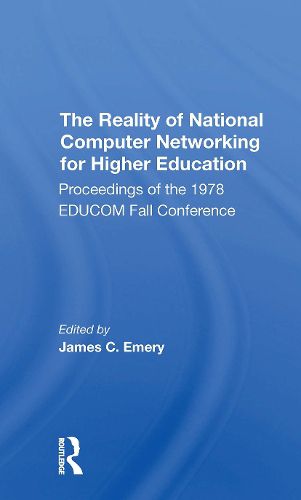Readings Newsletter
Become a Readings Member to make your shopping experience even easier.
Sign in or sign up for free!
You’re not far away from qualifying for FREE standard shipping within Australia
You’ve qualified for FREE standard shipping within Australia
The cart is loading…






Contributors to this book present a comprehensive view of the current status, prospects, and problems of computer networking in higher education, examining networking from the perspectives of both computer users and network suppliers. In the opening chapter, William F. Miller discusses the role that computer networking is likely to play in higher education. He notes that a national network often can provide specialized services more cost-effectively than can individual institutions and is able to offer a wider variety of services than is available at any single computer center. In succeeding chapters, Ronald Segal reports the results of an extensive research project on networking that included the simulation of a national network serying higher education and research; Paul Heller describes the early experiences of the EDUNET network; and Robert Scott discusses important facets of the EDUNET Business Plan. In the concluding chapters, William Massy, Tad Pinkerton, and Barry Berman review conference workshops in three broad areas: policy issues in networking, facilitating services for networking, and network resources.
$9.00 standard shipping within Australia
FREE standard shipping within Australia for orders over $100.00
Express & International shipping calculated at checkout
Contributors to this book present a comprehensive view of the current status, prospects, and problems of computer networking in higher education, examining networking from the perspectives of both computer users and network suppliers. In the opening chapter, William F. Miller discusses the role that computer networking is likely to play in higher education. He notes that a national network often can provide specialized services more cost-effectively than can individual institutions and is able to offer a wider variety of services than is available at any single computer center. In succeeding chapters, Ronald Segal reports the results of an extensive research project on networking that included the simulation of a national network serying higher education and research; Paul Heller describes the early experiences of the EDUNET network; and Robert Scott discusses important facets of the EDUNET Business Plan. In the concluding chapters, William Massy, Tad Pinkerton, and Barry Berman review conference workshops in three broad areas: policy issues in networking, facilitating services for networking, and network resources.